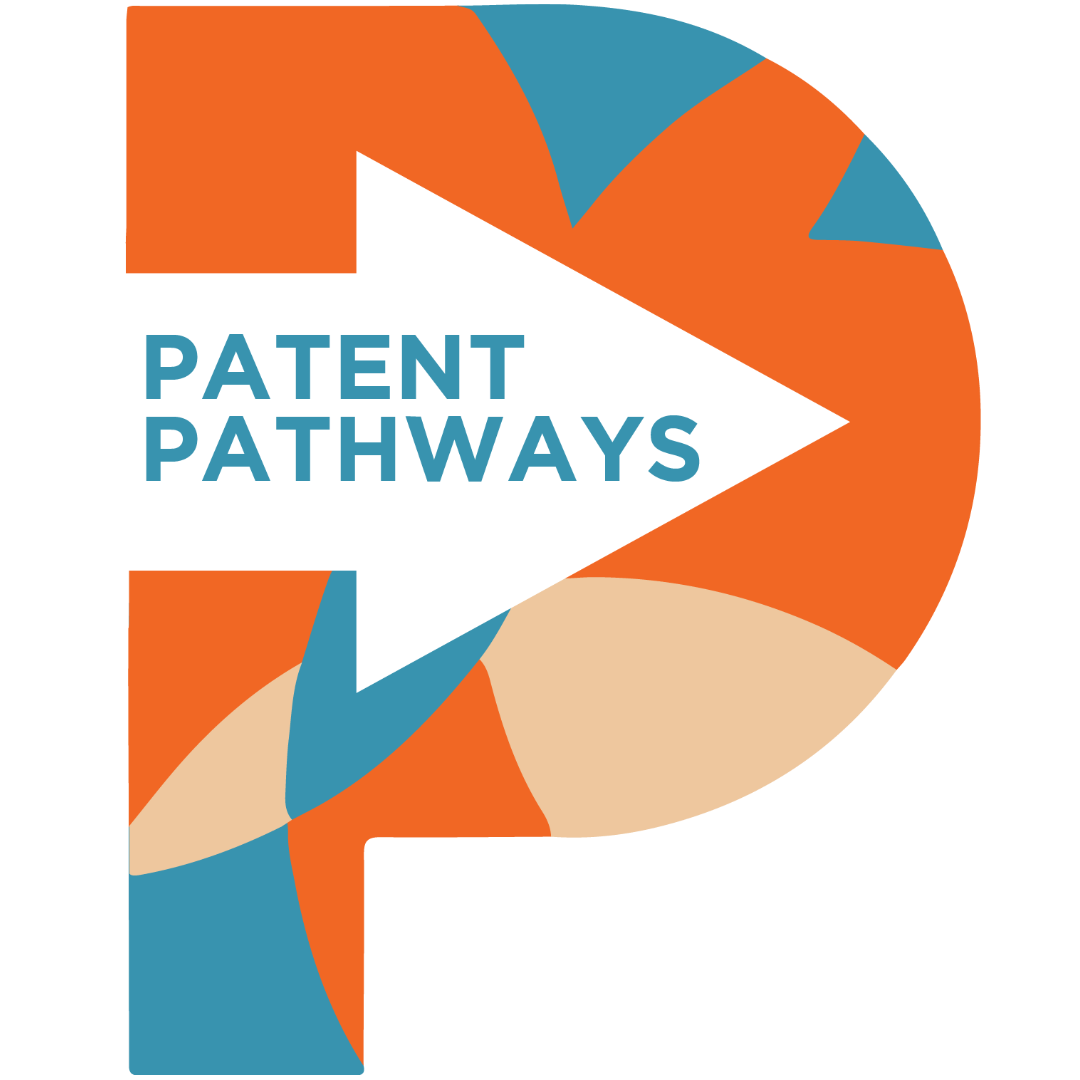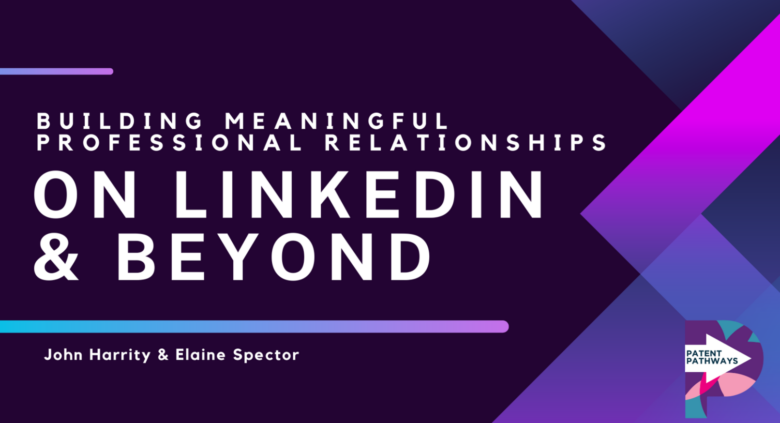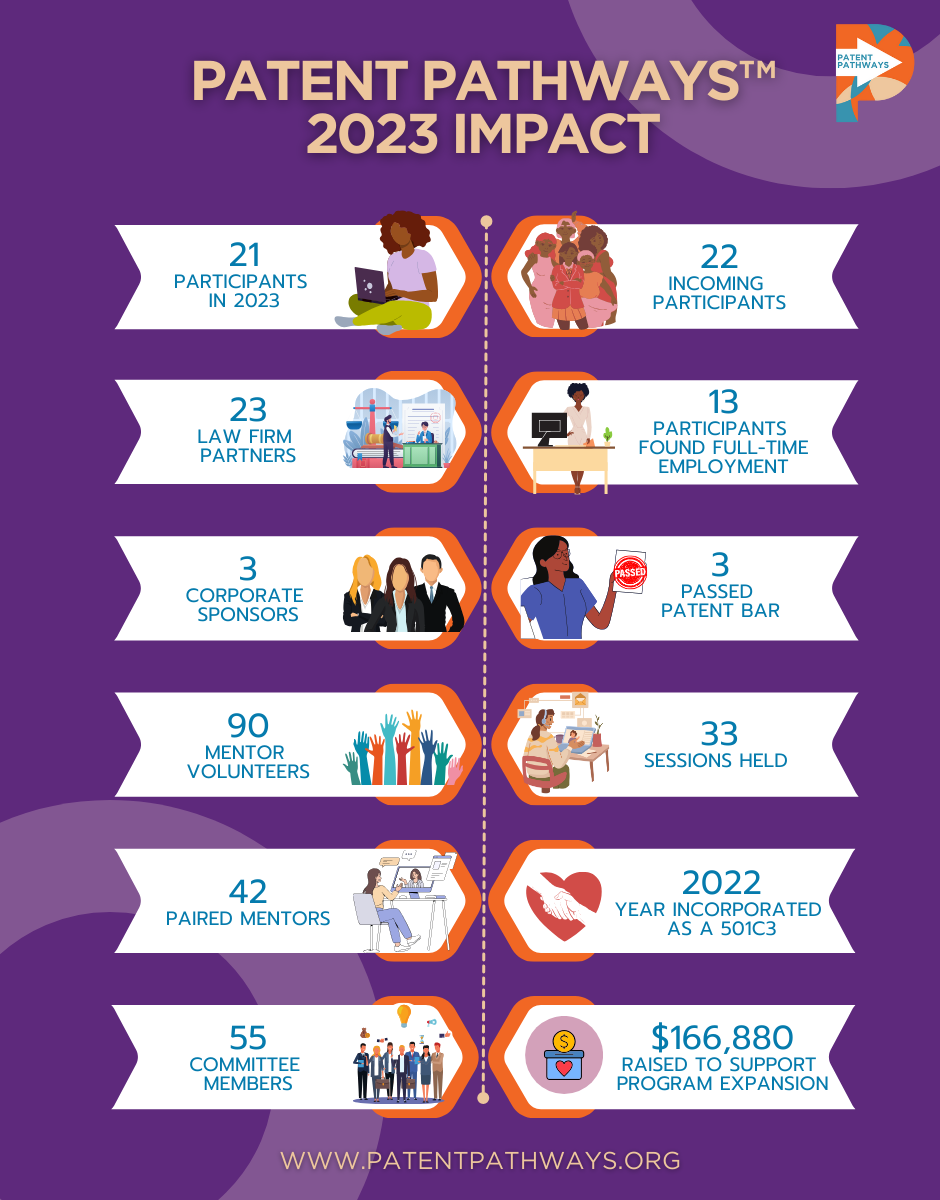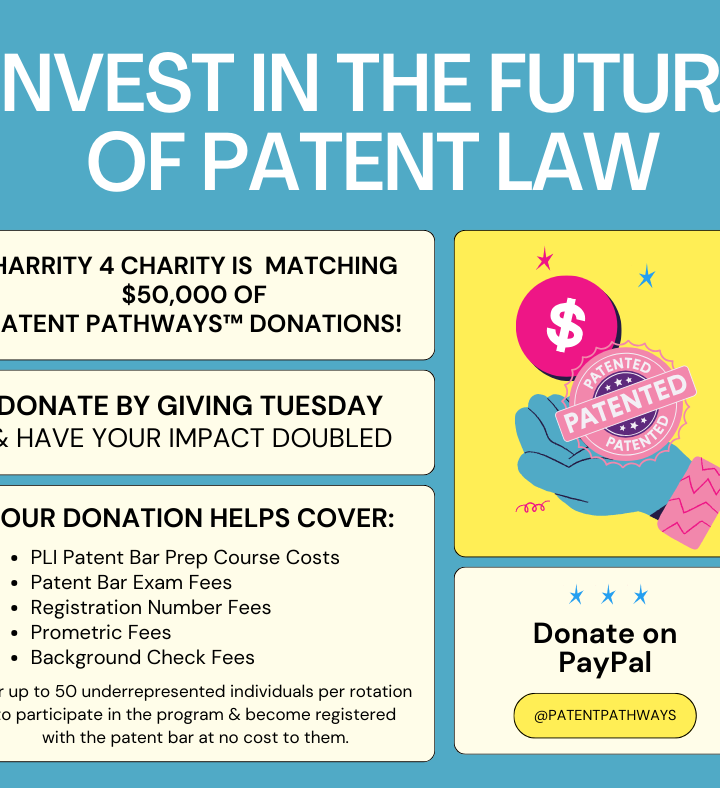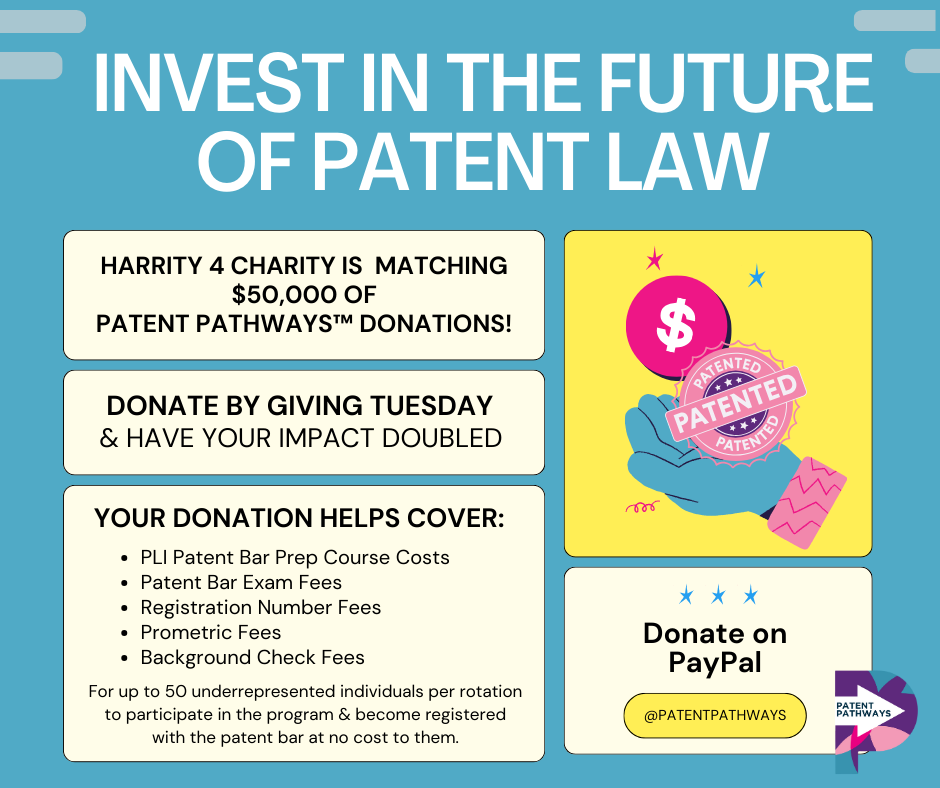Building Meaningful Professional Relationships on LinkedIn & Beyond
Building Meaningful Relationships on LinkedIn and Beyond
In today’s fast-paced, digital-first world, LinkedIn has evolved beyond just a networking platform. It has become an essential tool for building lasting, meaningful relationships that extend far beyond the virtual space. Especially for underrepresented innovators and entrepreneurs, LinkedIn provides an incredible opportunity to connect with industry leaders, mentors, and peers who can support your journey in the patent process and entrepreneurial endeavors.
In our latest Patent Pathways® session, Harrity’s John Harrity & Elaine Spector join us to teach how you can leverage LinkedIn to build authentic, long-term relationships that matter.
1. Lead with Value, Not Self-Promotion
The first rule of building meaningful relationships is to provide value before asking for anything in return. Whether it’s sharing insightful content, offering advice, or commenting on someone’s post with thoughtful feedback, leading with value shows that you are genuinely interested in contributing to the conversation.
Start by identifying what you can offer to others, whether it’s knowledge from your field, feedback on a project, or even offering to make connections. Building relationships is not about instant results—it’s about laying a foundation of trust and reciprocity.
2. Personalize Your Connections
One of the biggest mistakes people make when trying to build relationships on LinkedIn is sending generic connection requests. Take a moment to write a personalized message that explains why you want to connect and how you admire the person’s work or accomplishments.
This small step can make a huge difference in standing out from the hundreds of other requests professionals receive. Show that you’ve done your homework and have a genuine interest in who they are and what they do. It’s the beginning of a relationship, so start strong with a personal touch.
3. Engage Consistently, Not Just When You Need Something
Building relationships isn’t a one-time effort. It requires consistent engagement and nurturing over time. Comment on posts, share insightful articles, and celebrate your connections’ successes. Regular interactions help you stay top-of-mind and show that you’re genuinely invested in the relationship.
Being visible through consistent engagement also allows people to get familiar with your personal brand and expertise. When the time comes that you need advice or assistance, it won’t feel like you’re only reaching out for a favor.
4. Offer Support to Build Trust
One of the most powerful ways to foster long-term relationships is by offering your support, especially to those navigating complex processes like patents. Offer to make introductions, share resources, or give feedback on an idea or project.
When people feel supported, they are more likely to trust you and be open to building a relationship. In the world of patents and entrepreneurship, having a network of people you trust can lead to invaluable opportunities, collaborations, and insights.
5. Take Relationships Offline
While LinkedIn is a fantastic platform for initial introductions, meaningful relationships often flourish when they extend beyond the virtual world. Don’t hesitate to suggest a coffee chat, video call, or meeting at a networking event. These real-world interactions can cement connections and make you more memorable.
Relationships are built on trust and shared experiences, which are more easily formed in person or during direct communication. Whether it’s through a Zoom call or an in-person event, take the initiative to deepen your relationships beyond LinkedIn.
6. Be Authentic
At the core of every meaningful relationship is authenticity. People appreciate realness. Don’t try to be someone you’re not or overinflate your accomplishments. Be open about your journey, challenges, and ambitions. The more genuine you are, the more likely people are to connect with you on a deeper level.
In the innovation and patent world, authenticity is key. Whether you’re an entrepreneur pitching a new idea or an inventor seeking guidance, showing your true self will attract the right kind of people who align with your values and vision.
7. Stay in Touch and Follow Up
Building a relationship is just the beginning—maintaining it is the challenge. Follow up periodically with connections you’ve made, and keep them updated on your journey. Whether it’s a quick message to check in, or sharing a relevant article, staying in touch ensures the relationship doesn’t fade.
If you’ve had a meaningful conversation or received valuable advice, take the time to follow up with a thank-you message. These small actions build goodwill and solidify your relationships for the long term.
Beyond LinkedIn: Taking Relationship Building to the Next Level
While LinkedIn is a powerful tool, it’s just one part of the relationship-building equation. Joining industry groups, attending conferences, and participating in mentorship programs are also great ways to expand your network and nurture meaningful connections.
For underrepresented inventors and entrepreneurs, Patent Pathways® offers an incredible community of support. We not only guide you through the patent process but also help you build relationships that can lead to funding, mentorship, and new opportunities.
Building meaningful relationships takes time and effort, but the rewards are priceless. By investing in your network, leading with value, and being authentic, you can create a community of support that will not only help you achieve your goals but also open doors you never thought possible.
Stay connected, stay curious, and always look for ways to build bridges that go beyond the digital world.
Watch the full webinar here:
Ready to Build Your Network?
Join us at Patent Pathways®, where we empower underrepresented innovators with the tools, knowledge, and connections they need to navigate the patent process successfully. Let’s build meaningful relationships that lead to lasting innovation.
Get involved below!
JOIN A PATENT PATHWAYS COMMITTEE
BECOME A MENTOR
BECOME A LAW FIRM PARTNER
BECOME A CORPORATE SPONSOR
APPLY TO PARTICIPATE IN PATENT PATHWAYS
